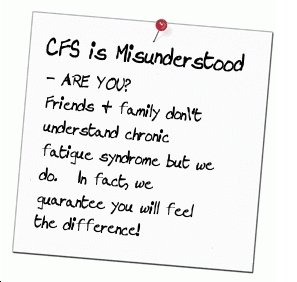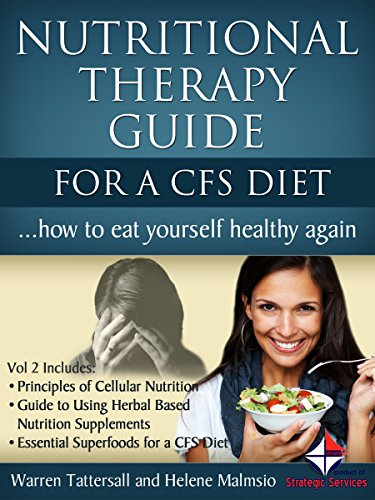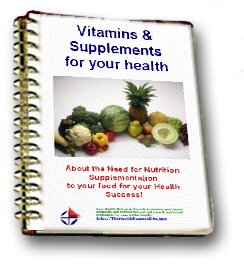Cholesterol: What You Need to Know - part 2
Quiz question: Nuts are high in fat, 80-89% of calories
coming from fat. Do they contain cholesterol?
A: No.
==> Nuts are from plant origin therefore they contain NO
cholesterol.
Do not assume that dishes that contain vegetables or grains
are cholesterol free. Vegetables and grains start off
cholesterol free BUT most recipes include egg yolk, milk,
meat, or butter. The cholesterol content depends on the
recipe ingredients as a whole.
Effects of Saturated Fat:
If you have heart disease or have a family history of heart
disease, it is likely your doctor has asked you to follow
a diet low in fat and cholesterol. The fat to watch is
saturated fat. Saturated fat INCREASES the level of bad
LDL cholesterol in your blood. This is why it is so
important to pay attention to the amount of saturated fat
that is in your diet.
You do not have to avoid all fats. Unsaturated fats
actually lower LDL cholesterol levels. Unsaturated fats
includes polyunsaturated and monounsaturated fats.
Monounsaturated fat is considered better than
polyunsaturated fat. Why? In addition to lowering the
bad LDL cholesterol, polyunsaturated fat lowers the good
HDL cholesterol. As discussed above, HDL is beneficial
because it collects LDL and brings it back to the liver
where the LDL is broken down. Monounsaturated fat leaves
the beneficial HDL cholesterol intact.
Sources of Polyunsaturated Fat:
Corn Oil, Sunflower Seed Oil, Safflower Oil,
Soybean Oil
Sources of Monounsaturated Fat:
Olive Oil, Canola Oil, Peanut Oil
The main sources of saturated fat are from foods from
animal origin and some from plants. Animal foods that
are high in saturated fat include beef, veal, lamb, pork,
butter, cream, milk - whole and 2%, cheese, and other dairy
products made from whole milk. Plant foods that are high
include coconut oil, palm oil, palm kernel oil, and cocoa
butter. Check food labels to see which type of oil or fat
was used in production.
The American Heart Association's dietary guidelines recommend
(1) Total Fat intake should be Less Than 30 Percent of
daily calories, and
(2) Saturated fat intake should be Less Than 10 Percent
of calories.
Cooking Tips from the American Heart Association
To reduce saturated fat in meat:
(1) Use a rack to drain off the fat when broiling,
roasting, or baking. Instead of basting with drippings,
keep meat moist with wine, fruit juices or an acceptable
oil-based marinade.
(2) Cook a day ahead of time. Stews, boiled meat, soup
stock or other dishes in which fat cooks into the liquid
can be refrigerated. Then the hardened fat can be removed
from the top.
(3) Make gravies after the fat has hardened and can be
removed from the liquid.
(4) Broil rather than pan-fry meats such as hamburger,
lamb chops, pork chops, and steak.
(5) When a recipe calls for browning the meat first, try
browning it under the broiler instead of in a pan.
(6) Avoid adding butter or margarine to vegetables when
cooking. Instead use herbs and spices for flavor
Cholesterol-Lowering Medications:
If you have high cholesterol and you make the necessary
changes in your diet and activity level, your cholesterol
level should begin to go down after three to six months.
If not your doctor may recommend cholesterol-lowering
medication. If you are prescribed a cholesterol-lowering
medication, remember that this is only the part of the
plan. For maximum benefit and effectiveness, you must
continue eating foods low in fat and cholesterol and
continue exercising.
Other lifestyle changes you should make to avoid heart
disease include losing weight if you are overweight, stop
smoking if you smoke, control high blood pressure, and
manage stress in your life. Traditionally, physicians have
used medication to control blood cholesterol. Here is a
fact for you to think about before you decide to take
cholesterol-lowering medication: 75% of all heart disease
can be prevented by lifestyle changes including dietary
changes and increased activity.
Cholesterol-lowering drugs are known as antihyperlipidemic
agents. There are five major groups: (1) Fibric acid
derivatives - Atromid-S clofibrate and Lopid gemdibrozil,
which work by preventing the liver from making or releasing
cholesterol into the bloodstream, (2) Bile acid
sequestrants - Questran cholestryamine and Colestid
cholestipol, which bind to bile acids and prevent their
absorption, (3) Nicotinic acid - Nicolar nicotinic acid,
which decreases the secretion of VLDL thus the formation
of "bad" LDL cholesterol, (4) Probucol - Lorelco probucol,
which enhances the clearance of cholesterol including LDL
and HDL cholesterol, and (5) HMG-CoA reductase inhibitors-
Mevacor lovastatin, Pravastatin, and Zocor simvastatin,
which work to help lower LDL cholesterol.
Now that you know which drugs are available and their
general method of action in the body, you can hopefully
make an educated decision along with your doctor on whether
or not cholesterol-lowering drugs are necessary. Again, it
cannot be stressed enough, a proper diet and exercise
regimen can help you in your fight against high cholesterol.
Fat Substitutes:
Food technology is be used today to create foods that are
rich and creamy yet lower in fat. The fat in food is being
replaced without sacrificing the taste and texture. There
are three categories that fat substitutes or replacers fall
into: (1) carbohydrate-based, (2) protein-based, or
(3) fat-based.
Carbohydrate-based fat replacers include cellulose,
maltodextrins, gums, starches, fiber, and polydextrose.
They are used in a wide variety of foods. Protein-based
fat replacers are especially useful in frozen and
refrigerated products. These include microparticulated
protein, modified whey protein concentrate, and protein
blends.
Fat-based fat replacers are chemically altered to provide
fewer or no calories. Some, such as olestra, pass through
the body unabsorbed. Examples of fat-based include
emulsifiers salatrim, caprenin, lipid analogs, and others.
The availability of fat-based ingredients used in reduced fat products is currently limited.
Eating foods made with fat-replacers can be helpful when trying to reduce your fat intake. However, these foods can often contain as many calories as the original product,
sometimes more. Read the food label and be sure you are
making a good choice!
BY LINES:
Written by Laura S. Garrett, RD, Registered Dietitian,
Fitness Trainer, & Owner of www.NutrActive.com -
Serving your Complete Nutrition & Active Lifestyle Needs
the A to Z directory of dealing with Health Problems & Self Care Strategies for natural remedies to your health issues.

Subscribe to get your weekly "Health Success Magazine" with a new complete & comprehensive Health Report in every edition!

to “Your Health Success”
our weekly F’R’E’E’ Newsletter
If you would like a free no-obligation private consultation or to contact Warren Tattersall for more information, please click here >> Contact Us

Click the books above to learn more about how we treat CFS naturally, to get your life back!
You will find many assorted Health Reports available for download free to you on this website!
Our free Health Success Reports are each available for you to download when you subscribe to receive them and their 7 part eCourse.
You can unsubscribe at any time, but we are sure you will want to receive all the email lessons of these informative ecourses.
Read more HERE to select the REPORT subjects of most interest (or concern) to you.









